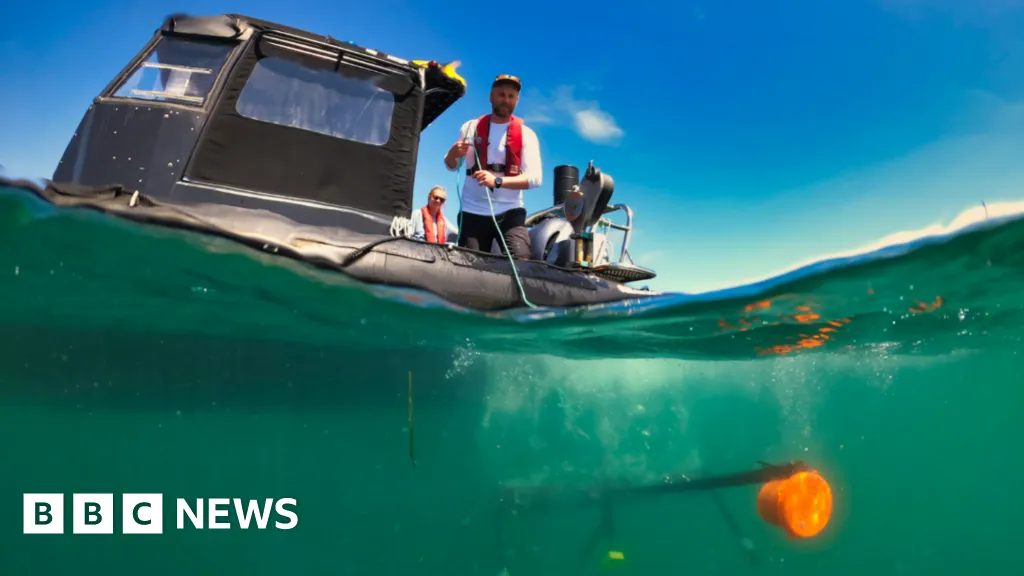Underwater cameras on the Isles of Scilly have given scientists a glimpse of how sea life can thrive in well-protected UK waters, a study has found.
Using baited underwater cameras, the University of Exeter found "vibrant marine life," including sharks, lobsters, octopuses, and bluefin tuna.
It said: "Despite widespread degradation of UK seas from destructive fishing, pollution, and climate change, the waters surrounding the Isles of Scilly appear to be bucking the trend."
Researchers said the "relatively low-cost camera systems" could be used to improve the monitoring and effectiveness of Marine Protected Areas (MPAs).
The study was led by the university, the Isles of Scilly Inshore Fisheries and Conservation Authority, and Natural England.
Dr. Owen Exeter from the Centre of Ecology and Conservation on the Penryn Campus in Cornwall said the "richness and variety of marine life" around the island was "wonderful to see".
"Our cameras recorded nearly 12,000 individual animals from 64 species including large populations of commercially targeted species such as lobsters and small sharks," he said.
"We also saw bluefin tuna which have recently returned to UK waters after largely disappearing due to overfishing."
Researchers described the Isles of Scilly waters as the UK's most "near-natural" marine ecosystem as it was protected from destructive practices such as bottom trawling and had relatively low human impact due to small population and well-managed fisheries.
"These waters haven't recovered from severe damage - they've remained in comparatively good condition," Dr Exeter said.
"By studying ecosystems like this, we can start to understand what a healthy UK marine environment should look like.
"This gives us a crucial reference point as we work to restore degraded areas elsewhere."
Dr. Kristian Metcalfe, associate professor in marine conservation science at the university, said MPAs were only as effective as the protections and monitoring in place to support them.
She said: "These camera systems allow us to track changes in species diversity and abundance over time, giving us vital evidence on whether conservation measures are working.
"They're non-destructive, relatively inexpensive, and scalable - making them a great option for regular biodiversity assessments across large areas of our coastal seas."
